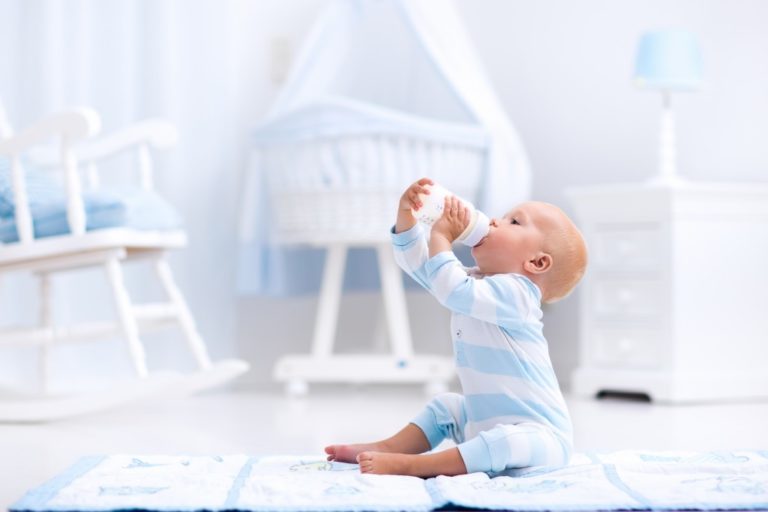Like most parents, you’ve probably wondered if your baby’s milk bottles are truly sanitized. Since babies’ immune systems and digestive tracts have not yet been fully formed, we need to make sure that we don’t unknowingly introduce different kinds of harmful bacteria into their little systems, especially not through their feeding bottles. Especially if your baby is prone to infections, or if they’re immunocompromised—you need to be doubly sure that everything that touches their lips is spotless and totally free from any kinds of bacteria. Some harmful bacteria can cause your baby to suffer from stomach flu, food poisoning, vomiting, diarrhea, hepatitis A, and rotavirus. So proper sterilization is always key and necessary to protect our babies.
More than being paranoid, we need to be proactive about the cleanliness of their bottles. Here are some foolproof ways to make sure your baby’s feeding bottles are sterilized.
What to sterilize
Your baby’s feeding bottles are not the only items that need sterilizing. Here are some of your baby’s things that need a thorough cleaning as well:
- Bottles and nipples
- Bottle rings and other feeding accessories
- Pacifiers
- Breast pump parts (check with the manual or ask your manufacturer about their recommended sterilization methods)
When to sterilize
It’s not necessary to sterilize your baby’s bottles after every use. However, you need to clean them thoroughly each time. Here are the times when you most definitely need to sterilize your bottles:
- When they’re brand new, and you’re about to use them for the first time
- If there’s a build-up of milk in the bottle or the nipples
- If you’re traveling or live in an area where you’re unsure if the tap water is regulated
- If your baby has been sick, especially with oral illnesses like mouth ulcers or oral thrush
- If your water resource is from a well, then you should sterilize your bottle each time
How to sterilize
You need to take plenty of safety precautions to ensure that your sterilization methods don’t harm you and your baby. Here are some safety reminders to protect yourself and your baby from harm:
- If you’re going to sterilize using steam or boiling water, take every safety measure to make sure you don’t burn yourself. Don’t hold your baby while trying to do it. If it’s possible, use steam instead of boiling water.
- When you suing a bleach solution, ensure that it’s properly diluted. Bleach is a strong chemical that can be dangerous and even fatal when ingested.
- Avoid baby bottles or food and liquid containers with BPA, or Bisphenol A, a chemical used to harden plastics. There are concerns that BPA may have harmful effects on humans, and when bottles with BPA are heated, the chemicals leach into the milk. However, if you already have these bottles, don’t heat them as a method of sterilizing.
Now that you know the what-not-to-dos, here are some to-dos:
Heat the bottles and accessories in the microwave
- Fill the bottles halfway with water and set them in a clean microwave.
- Place rings, nipples, and other accessories in a microwavable bowl filled with water. Make sure it’s deep enough that it can cover the accessories.
- Set the microwave to “high” and let it run for a minute and a half.
- Let the items cool sufficiently before removing them from the microwave.
Boil the bottles and accessories in water

- Put your bottles and accessories in a large pot of water.
- Push down any items or bottles floating on the surface. Make sure that they are not submerged by placing a spoon on them.
- When the water is boiling, set the alarm for 10 minutes.
- Use tongs to remove the accessories and the bottles after ten minutes.
- Let them air dry using a drying rack.
Invest in a top-grade sterilizer
There’s a lot of equipment in the market that you can explore, especially if your baby is immunocompromised and has a preexisting condition that makes them prone to infection. You want to make sure that your bottles are truly sterilized. Top-of-the-line laboratory water bath equipment can provide precision and ease of use; it is also low-maintenance and can prevent organisms’ growth when used with proper disinfectants.
The Bottom Line
There are plenty of ways to make sure that your baby’s feeding equipment is sterilized properly. So don’t let paranoia get in the way, and lead with confidence in your ability to do right by your child. It’s just a matter of exploring and researching the best methods, tools, and equipment you can use. You can do it!

